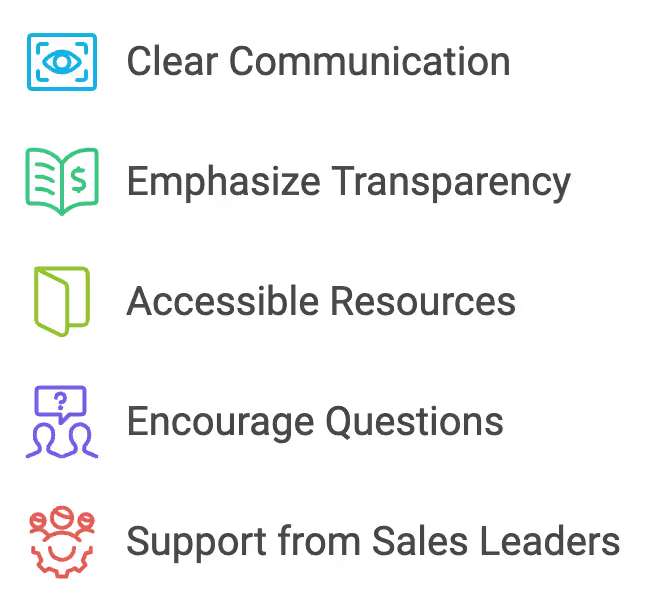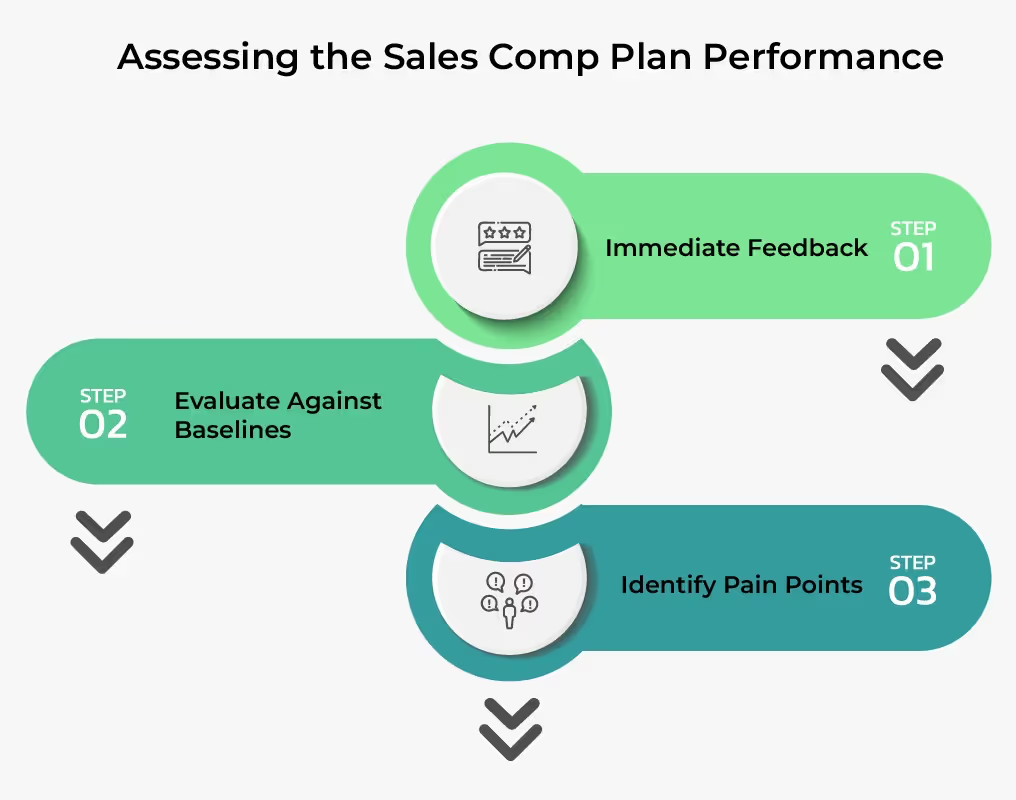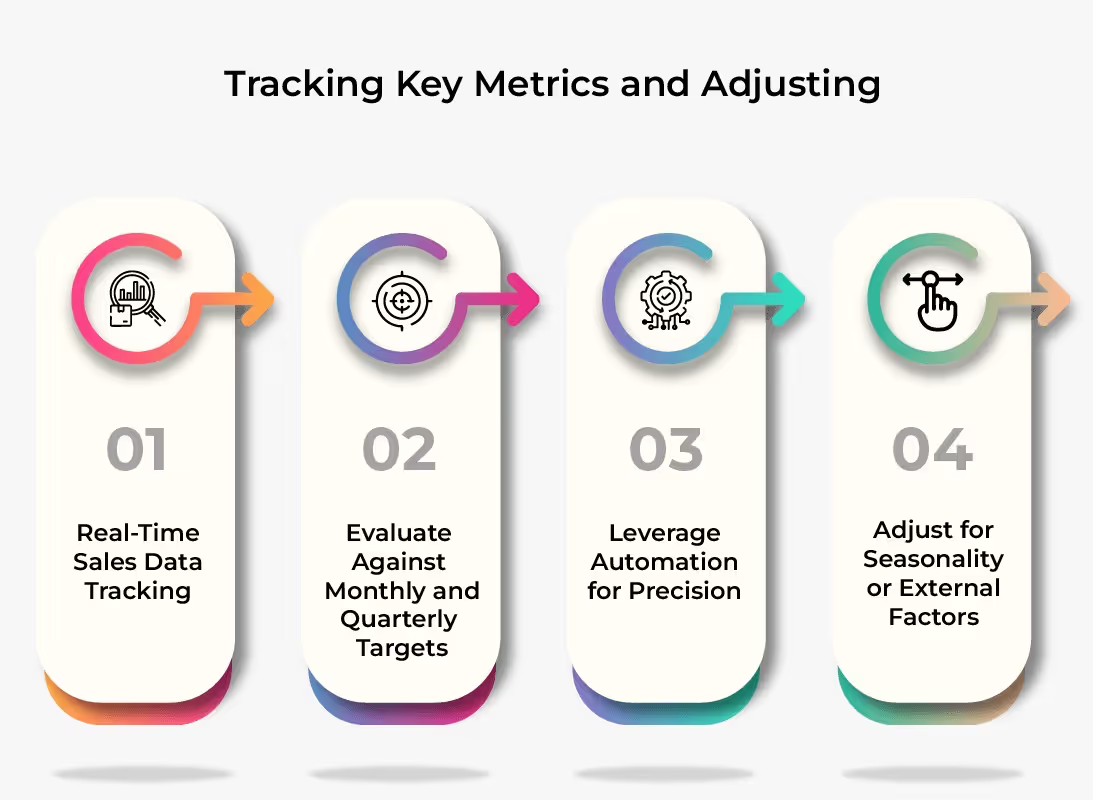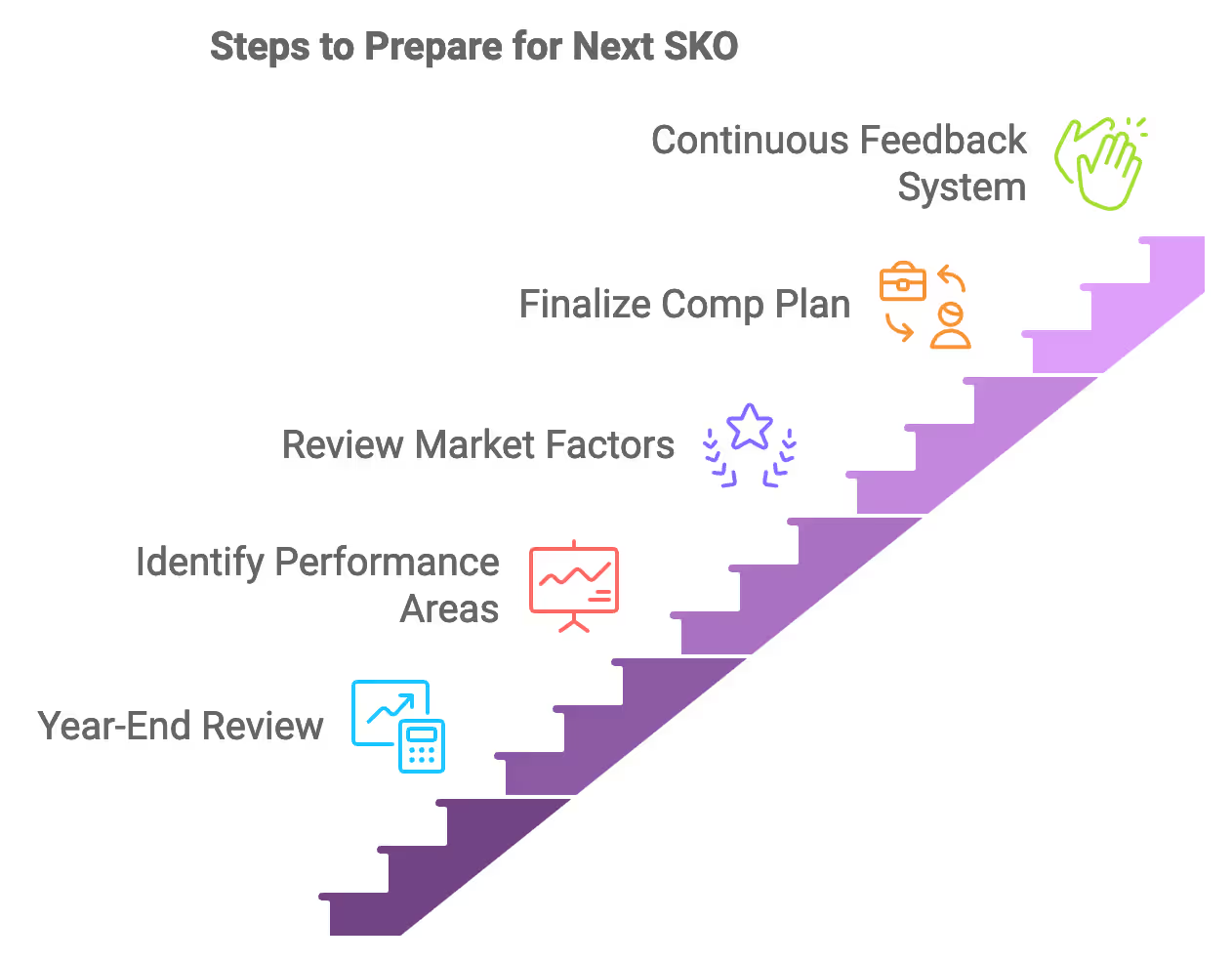
Blog
Next Steps for Sales Comp Leaders: Post-SKO Success
October 30, 2024


Key Insights
Next Steps for Sales Comp Leaders: Post-SKO Success
Oh, okay, months or years of planning were done, and then the sales kickoff happened. Now what? Is that where the work is done? Well, it has only begun.
When the Sales Kickoff (SKO) wraps up, it’s not just the end of a high-energy start but the real beginning of the year’s journey. The SKO sets the stage with new goals, fresh sales targets, and a brand-new sales comp plan to keep everyone motivated. But once the confetti settles and the excitement fades, the real work begins, putting that strategy to the test in the day-to-day.
This post-SKO phase is where the plan comes alive for sales comp leaders. Here’s a checklist to ensure your team stays fired up and that your comp plan drives the results you’ve envisioned.
- Sales Compensation Rollout
First things first: the rollout. This is where the vision behind your compensation plan becomes reality. The way you introduce it to the team is crucial to building excitement, setting expectations, and clarifying objectives.
Here are a few key components of an effective rollout:

- Clear Communication
Share the ‘why’ behind the plan. Why is this new plan needed? How will it help both the sales team and the company reach their goals? Explain the structure, targets, and any new elements that differ from past plans.
- Emphasize Transparency
Be upfront about how commissions and incentives will be calculated, what metrics matter most, and any tiers, accelerators, or multipliers. When sales reps know exactly how they’ll be rewarded, they’re more likely to buy into the plan.
- Accessible Resources
Provide resources that are easy to understand and refer back to, think digital documents, FAQs, or quick-reference sheets.
- Encourage Questions
Open the floor for any questions right away. When sales reps feel confident and clear about the plan, they’re more likely to stay engaged and motivated to achieve their targets.
- Support from Sales Leaders
Have your leadership team present and ready to reinforce the importance of the new comp plan. Leadership support sets the tone and helps motivate the team.
- Assess the Sales Comp Plan Performance
Once the plan is in motion, it’s time to assess whether it’s working as expected. Regularly checking your comp's performance helps you understand what’s driving the results.

- Immediate Feedback
Early feedback from the sales team is invaluable. If they find parts of the plan confusing, too aggressive, or ineffective, it’s important to address these issues promptly.
- Evaluate Against Baselines
Compare current results with previous periods to gauge the effectiveness of the new plan. Is it boosting performance in the areas you intended, or are there unintended consequences?
- Identify Pain Points
Look out for areas where the comp plan may be creating challenges, like specific targets that are hard to hit or metrics that are hard to track.
- Track Key Metrics and Adjusting
Staying on top of metrics allows you to make well-informed decisions about the comp plan, allowing adjustments before small issues turn into big problems.

- Real-Time Sales Data Tracking
Track real-time data points such as closed deals, conversion rates, and deal size through automated tools or dashboards. Real-time tracking helps you spot trends and address them before they affect the whole team’s performance.
- Evaluate Against Monthly and Quarterly Targets
Regularly comparing actual results with projections allows you to see whether the plan is achieving expected results. Adjust your incentives if reps are consistently missing targets or if some benchmarks are too easy to achieve.
- Adjust for Seasonality or External Factors
If external conditions affect your sales numbers (like industry trends or seasonality), don’t be afraid to adjust the targets and incentives to keep your sales reps motivated. This flexibility can prevent demotivation due to factors beyond their control.
- Leverage Automation for Precision
If you’re using an automated tool like Kennect, make sure to set up real-time reporting that aligns with your KPIs. Automation eliminates manual errors and gives you immediate insights to work with.
- Ongoing Communication and Alignment
After the initial rollout, clear and ongoing communication is essential. Regular check-ins with the team ensure alignment and keep lines open for questions or concerns. This ongoing communication reinforces the “why” behind the plan, which can be a powerful motivator. Weekly or monthly reviews can help reinforce goals, and feedback loops where reps can share their experience with the plan allow management to address any emerging needs.

- Continuous Education and Training:
New challenges arise throughout the year, and continuous training can keep your team sharp. Regular skill refreshers and training sessions align with the overall sales strategy, ensuring team members are well-prepared for upcoming goals. Make training resources readily accessible so team members can revisit them as needed.
- Reinforcement Through Leadership
Leadership plays a huge role in sustaining motivation. When leaders visibly support the compensation plan’s goals and values, it resonates with the team. Leaders can drive participation in communications and training and provide recognition for milestone achievements. Recognition from leadership reinforces the plan’s importance and can help motivate team members toward achieving their goals.
Preparing for the Next Cycle: Steps to Gather Insights for the Next SKO

- Conduct a Year-End Performance Review
Analyze key performance metrics, such as revenue growth, win rates, and average deal size, and see how they align with your initial targets. Understanding how well your team performed gives you a foundation to refine next year’s objectives. - Identify High-Performing and Underperforming Areas
Look at which segments of the sales plan delivered the best results and where the team struggled. Are there product lines, regions, or sales activities that outperformed or underperformed? These insights can guide future target setting and resource allocation. - Review External Market Factors and Industry Trends
Assess any external conditions that affected sales performance, like economic shifts or market trends, and factor these into next year’s strategy. This approach keeps your targets realistic and responsive to broader market forces. - Finalize the Next Comp Plan and Communicate Early
Once you’ve outlined the new compensation structure, communicate it to the team well before the next SKO. Early communication builds transparency and excitement, allowing team members to ask questions and align with next year’s goals. - Create a Continuous Feedback System
Set up a system for regular feedback throughout the year, so you’re not waiting until year-end to gather insights. This could include quarterly reviews or pulse surveys to keep a close pulse on team motivation and comp plan effectiveness.
What is Post-Plan Period Mitigation?
After the official close of the comp plan, there’s a brief but essential period known as “post-plan period mitigation,” aimed at ensuring a smooth transition into the next cycle. This is when final data reconciliation takes place to ensure accurate compensation and interim motivators can be put in place to maintain morale as the team awaits the next SKO.
Conclusion
As the dust settles after your sales kickoff, remember that this is just the beginning of an exciting journey ahead.
Rolling out your compensation plan effectively, tracking performance in real-time, maintaining ongoing communication, and continuously adapting, you can keep the momentum alive and thriving.
💡Bonus Tip: When planning your incentives, don’t forget to leverage Kennet’s Incentive Compensation Management software to automate the entire process. This ensures precision, reduces manual errors, and provides you with real-time insights to make informed decisions.
Now, let’s roll up our sleeves and turn those ambitious goals into reality!
ReKennect : Stay ahead of the curve!
Subscribe to our bi-weekly newsletter packed with latest trends and insights on incentives.
Thank you! Your submission has been received!
Oops! Something went wrong while submitting the form.
Your data is in safe hands. Check out our Privacy policy for more info











